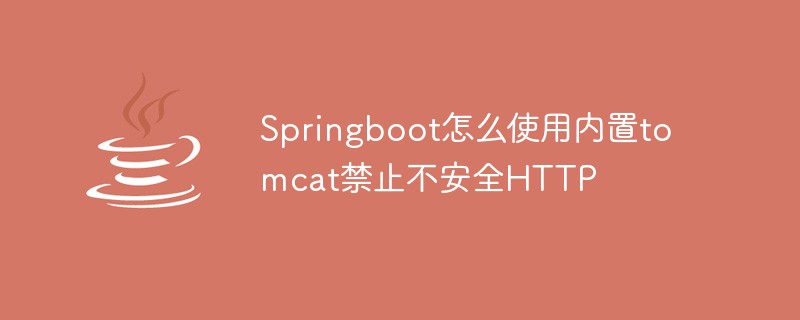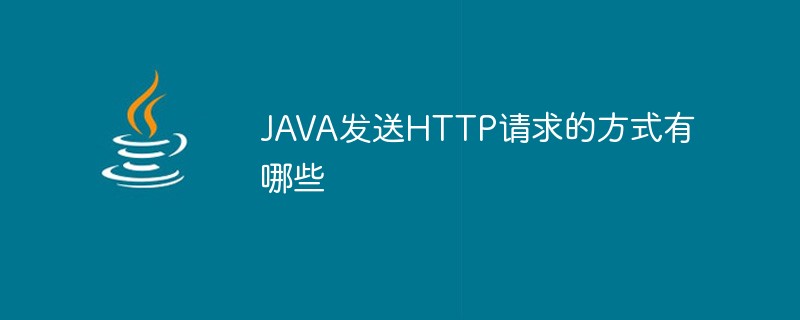This article is translated from an article on the BIND main website: http://www.isc.org/products/BIND/FAQ.html. It should be said that these problems are very typical and can provide considerable help to BIND 9 users in their daily maintenance and management.
1. Why does the -u parameter not work when I use the bind program compiled with the --enable-threads option on Linux 2.2.x?
Answer: Linux threads do not fully implement the Posix thread (pthreads) standard. In particular, setuid() can only work on the current thread, not the entire process. Because of this limitation, BIND 9 on Linux cannot use setuid() like it can on other supported system platforms. Setuid() cannot be called before the thread is created, because the server can only start listening to the reserved port after the thread is started.
For 2.2.18 or 2.3.99-pre3 and newer kernels, availability can still be maintained after calling setuid(). This allows BIND 9 to call setuid() earlier while maintaining the ability to bind to reserved ports. This is a special treatment for Linux.
On the 2.2 kernel, BIND 9 does give up many root privileges, so this will be more secure than root processes that do not give up privileges.
If Linux threads are already working normally, this restriction will no longer exist.
Users can use the --disable-threads option (this is the default option) to compile BIND9, which will generate a non-threaded version. Users can use the -u option.
2. Why is the warning message "no TTL specified - using SOA MINTTL instead" given in the named log?
Answer: Your zone file does not comply with the RFC1035 standard. You can use two methods to solve this problem:
1) Add a line defining TTL at the beginning of the zone file, for example: $TTL 86400
2) Include the TTL field in the first record of the zone file , for example: example.com. 86400 IN SOA ns hostmaster
3. Why do I see 5 (or more) named copies on Linux?
Answer: Each Linux thread will also be displayed like a process under ps. Generally, the number of running threads is n+4, where n represents the number of CPUs. Note that the amount of memory used does not follow the principle of accumulation; if each process uses 10M of memory, then all threads will only use a total of 10M of memory.
4. Why do I still get "permission denied" error logs when accessing configuration files or zone files even if I run BIND 9 as root on a Linux system?
A: On Linux, BIND 9 gives up most of the root permissions when it starts, including the permission to open files owned by other users. Therefore, if the server is running as root, the configuration files and zone files should also be owned by root.
5. Why do I get an error message similar to "dns_zone_load: zone foo/IN: loading master file bar: ran out of space"?
A: This is usually caused by a missing quote in the TXT record. Check that all TXT records contain complete quotes.
6. How can I generate a usable core file from multi-threaded named on Linux?
A: If the Linux kernel is 2.4.7 or newer, multi-threaded core export (dump) is available (that is, the correct threads will be exported). Otherwise, if you are using a 2.2 kernel, you need to apply the kernel patch in contrib/linux/coredump-patch and recompile the kernel. This patch enables multi-threaded programs to export the correct threads.
7. How can I restrict others from querying my server version?
Answer: Place the "version" option in the "options" section of named.conf, and set its value to a version different from the version you actually use. Note: Doing this will not prevent attacks, but may hinder others' attempts to diagnose problems with your server, and it may also become a sign for others to identify your server.
8. How can I restrict that only remote users can query the server version?
Answer: When the internal view that holds version information is last matched, the following view statement will intercept the query. The caveat in the answer to the previous question applies here as well.
view "chaos" chaos {
match-clients { ; };
allow-query { none; };
zone "." {
type hint;
file "/ dev/null"; // or any empty file
};
};
9. What does "no source of entropy found" or "could not open entropy source foo" mean?
A: Servers require a source of entropy to perform specific operations, usually related to DNSSEC. These information tips have no source of information entropy. On systems with /dev/random or similar devices, they are used by default. Information sources can also be defined through the random-device option in named.conf.
10. I installed BIND 9 and restarted named, but it is still BIND 8. Why is this?
Answer: BIND 9 is installed under /usr/local by default. BIND 8 is usually installed under /usr. Check if the correct named is running.
11. I try to use TSIG to verify dynamic updates or zone transfers. I'm sure the key settings are correct, but the server still refuses TSIG, why?
Answer: This may be an issue with the clock being inaccurate. Check whether the client's clock and the server's clock are synchronized (e.g. using ntp).
12. I tried to compile BIND 9, but "make" failed because some files could not be found. Why?
A: Using parallel or distributed "make" to compile BIND 9 is not supported and will not work. If you do use one of them, it is recommended that you use regular make or gmake instead.
13. I have a BIND 9 master server and a BIND 8.2.3 slave server, and the master server recorded something similar to "notify to 10.0.0.1#53 failed: unexpected end of input" error message. What's wrong?
A: This error message is caused by a known bug in BIND 8.2.3, which has been fixed in BIND 8.2.4. You can ignore it completely - notify is working normally regardless of the error message.
14. I keep getting the following log information. Why?
Dec 4 23:47:59 client 10.0.0.1#1355: updating zone example.com/IN: update failed: RRset exists (value dependent) prerequisite not satisfied (NXRRSET)
Answer: DNS updater allows updates Request a test to confirm that specific conditions are met before an update is made. The above information indicates that the conditions are not met and the update cannot continue. See doc/rfc/rfc2136.txt for more information on prerequisites.
15. I keep getting the following log information. Why?
Jun 21 12:00:00.000 client 10.0.0.1#1234: update denied
Answer: Someone is trying to use the RFC2136 dynamic update protocol to update your DNS data. Windows 2000 machines have the habit of sending dynamic update requests to the DNS server without prior configuration. If the update request is coming from a Windows 2000 machine, see
16. I saw the following log information. Why?
couldnt open pid file /var/run/named.pid: Permission denied
Answer: It is very likely that you are running named as a non-root user, and the user does not have write permissions for /var/run. The usual fix is to create the /var/run/named directory owned by named user and set the pid file to "/var/run/named/named.pid", or set the pid file to "named.pid", which will The file is placed in the directory specified by the directory option (in this case, the directory must be writable by named user).
17. When I execute "dig . ns", many A records about the root server are lost. Why?
A: This is normal and nothing serious. There are some confusing side effects in the way BIND 9 implements RFC 2181's trust ranking and in BIND 9's efforts to prevent glue from entering answers.
When BIND 9 first starts and initializes its buffers, it receives root server addresses as additional data in the root server's authoritative response, and these records are eligible for inclusion in the response as additional data. It then receives a subset of the root server addresses as additional data in the root server's non-authoritative (recommended) response. This results in these addresses now being considered non-authoritative (relevant) data and they are not suitable for inclusion in responses.
Servers do always have a complete set of root server addresses as buffers, they just may not include all of them as additional data, depending on whether they last received a response or related data. You can usually find these addresses using an explicit query such as "dig a.root-servers.net A".
18. The zone transfer from the BIND 9 master server to the Windows 2000 slave server failed. Why?
A: This may be due to a bug in the Windows 2000 DNS server. On Windows machines, DNS messages larger than 16K cannot be processed correctly. This can be solved by setting the option "transfer-format one-answer;". You can also check to see if your zone contains embedded spaces or other special characters, such as "John2Doe3s2Computer", as these names are also known to cause Windows 2000 slave servers to incorrectly reject zones.
19. Why is my zone file not reloaded when I execute "rndc reload" or SIGHUP?
A: You can update the zone file by editing the zone file and rebooting the server, or you can do it through dynamic update, but you cannot use both methods at the same time. If you have used the "allow-update" option for a zone to activate dynamic updates, you can no longer manually edit the zone file, and the server will no longer attempt to reload the zone file.
20. I can query the domain name server on the domain name server, but I cannot find it from other machines. Why?
A: This is usually the result of a firewall configuration that blocks queries and/or responses.
21. How can I make the server serve as a slave server for both internal and external views? When I try to do this, two views on the slave server transfer the same view on the master server.
Answer: You should set multiple IP addresses for the master server and slave server. For example:
Main server: 10.0.1.1 (internal), 10.0.1.2 (external, IP alias)
internal:
match-clients { !10.0.1.2; !10.0.1.4; 10.0.1/24; };
notify-source 10.0.1.1;
transfer-source 10.0.1.1;
query-source address 10.0.1.1;
external:
match-clients { any; };
recursion no; // dont offer recursion to the world
notify-source 10.0.1.2;
transfer-source 10.0.1.2;
query-source address 10.0.1.2;
Slave server: 10.0.1.3 (internal), 10.0.1.4 (external, IP alias)
inte
 Springboot怎么使用内置tomcat禁止不安全HTTPMay 12, 2023 am 11:49 AM
Springboot怎么使用内置tomcat禁止不安全HTTPMay 12, 2023 am 11:49 AMSpringboot内置tomcat禁止不安全HTTP方法1、在tomcat的web.xml中可以配置如下内容让tomcat禁止不安全的HTTP方法/*PUTDELETEHEADOPTIONSTRACEBASIC2、Springboot使用内置tomcat没有web.xml配置文件,可以通过以下配置进行,简单来说就是要注入到Spring容器中@ConfigurationpublicclassTomcatConfig{@BeanpublicEmbeddedServletContainerFacto
 如何在技嘉主板上设置键盘启动功能 (技嘉主板启用键盘开机方式)Dec 31, 2023 pm 05:15 PM
如何在技嘉主板上设置键盘启动功能 (技嘉主板启用键盘开机方式)Dec 31, 2023 pm 05:15 PM技嘉的主板怎么设置键盘开机首先,要支持键盘开机,一定是PS2键盘!!设置步骤如下:第一步:开机按Del或者F2进入bios,到bios的Advanced(高级)模式普通主板默认进入主板的EZ(简易)模式,需要按F7切换到高级模式,ROG系列主板默认进入bios的高级模式(我们用简体中文来示范)第二步:选择到——【高级】——【高级电源管理(APM)】第三步:找到选项【由PS2键盘唤醒】第四步:这个选项默认是Disabled(关闭)的,下拉之后可以看到三种不同的设置选择,分别是按【空格键】开机、按组
 今日头条发布文章怎么才能有收益?今日头条发布文章获得更多收益方法!Mar 15, 2024 pm 04:13 PM
今日头条发布文章怎么才能有收益?今日头条发布文章获得更多收益方法!Mar 15, 2024 pm 04:13 PM一、今日头条发布文章怎么才能有收益?今日头条发布文章获得更多收益方法!1.开通基础权益:原创文章选择投放广告可获得收益,视频必须要原创横屏才会有收益。2.开通百粉权益:粉丝量达到百粉以上,微头条、原创问答创作及问答均可获得收益。3.坚持原创作品:原创作品包含文章、微头条及问题等,要求300字以上。注意违规抄袭作品作为原创发布,会被扣信用分,即使有收益也会被扣除。4.垂直度:做专业领域一类的文章,不能随意跨领域写文章,会得不到合适的推荐,达不到作品的专和精,难以吸引粉丝读者。5.活跃度:活跃度高,
 CS玩家的首选:推荐的电脑配置Jan 02, 2024 pm 04:26 PM
CS玩家的首选:推荐的电脑配置Jan 02, 2024 pm 04:26 PM1.处理器在选择电脑配置时,处理器是至关重要的组件之一。对于玩CS这样的游戏来说,处理器的性能直接影响游戏的流畅度和反应速度。推荐选择IntelCorei5或i7系列的处理器,因为它们具有强大的多核处理能力和高频率,可以轻松应对CS的高要求。2.显卡显卡是游戏性能的重要因素之一。对于射击游戏如CS而言,显卡的性能直接影响游戏画面的清晰度和流畅度。建议选择NVIDIAGeForceGTX系列或AMDRadeonRX系列的显卡,它们具备出色的图形处理能力和高帧率输出,能够提供更好的游戏体验3.内存电
 JAVA发送HTTP请求的方式有哪些Apr 15, 2023 am 09:04 AM
JAVA发送HTTP请求的方式有哪些Apr 15, 2023 am 09:04 AM1.HttpURLConnection使用JDK原生提供的net,无需其他jar包,代码如下:importcom.alibaba.fastjson.JSON;importjava.io.BufferedReader;importjava.io.InputStream;importjava.io.InputStreamReader;importjava.io.OutputStream;importjava.net.HttpURLConnection;
 主板上的数字音频输出接口-SPDIF OUTJan 14, 2024 pm 04:42 PM
主板上的数字音频输出接口-SPDIF OUTJan 14, 2024 pm 04:42 PM主板上SPDIFOUT连接线序最近我遇到了一个问题,就是关于电线的接线顺序。我上网查了一下,有些资料说1、2、4对应的是out、+5V、接地;而另一些资料则说1、2、4对应的是out、接地、+5V。最好的办法是查看你的主板说明书,如果找不到说明书,你可以使用万用表进行测量。首先找到接地,然后就可以确定其他的接线顺序了。主板vdg怎么接线连接主板的VDG接线时,您需要将VGA连接线的一端插入显示器的VGA接口,另一端插入电脑的显卡VGA接口。请注意,不要将其插入主板的VGA接口。完成连接后,您可以
 广联达软件电脑配置推荐;广联达软件对电脑的配置要求Jan 01, 2024 pm 12:52 PM
广联达软件电脑配置推荐;广联达软件对电脑的配置要求Jan 01, 2024 pm 12:52 PM广联达软件是一家专注于建筑信息化领域的软件公司,其产品被广泛应用于建筑设计、施工、运营等各个环节。由于广联达软件功能复杂、数据量大,对电脑的配置要求较高。本文将从多个方面详细阐述广联达软件的电脑配置推荐,以帮助读者选择适合的电脑配置处理器广联达软件在进行建筑设计、模拟等操作时,需要进行大量的数据计算和处理,因此对处理器的要求较高。推荐选择多核心、高主频的处理器,如英特尔i7系列或AMDRyzen系列。这些处理器具有较强的计算能力和多线程处理能力,能够更好地满足广联达软件的需求。内存内存是影响计算
 PHP Fatal error: Call to undefined function ldap_bind()的解决方法Jun 22, 2023 pm 11:37 PM
PHP Fatal error: Call to undefined function ldap_bind()的解决方法Jun 22, 2023 pm 11:37 PM在使用PHP开发Web应用程序时,我们经常需要使用LDAP身份验证来保护应用程序的访问。然而,在有些情况下,当我们尝试使用PHP的LDAP功能来实现身份验证时,可能会遇到以下错误消息:"PHPFatalerror:Calltoundefinedfunctionldap_bind()"。这种错误消息通常会在应用程序调用ldap_bind()函数


Hot AI Tools

Undresser.AI Undress
AI-powered app for creating realistic nude photos

AI Clothes Remover
Online AI tool for removing clothes from photos.

Undress AI Tool
Undress images for free

Clothoff.io
AI clothes remover

AI Hentai Generator
Generate AI Hentai for free.

Hot Article

Hot Tools

EditPlus Chinese cracked version
Small size, syntax highlighting, does not support code prompt function

ZendStudio 13.5.1 Mac
Powerful PHP integrated development environment

Safe Exam Browser
Safe Exam Browser is a secure browser environment for taking online exams securely. This software turns any computer into a secure workstation. It controls access to any utility and prevents students from using unauthorized resources.

Dreamweaver Mac version
Visual web development tools

VSCode Windows 64-bit Download
A free and powerful IDE editor launched by Microsoft






